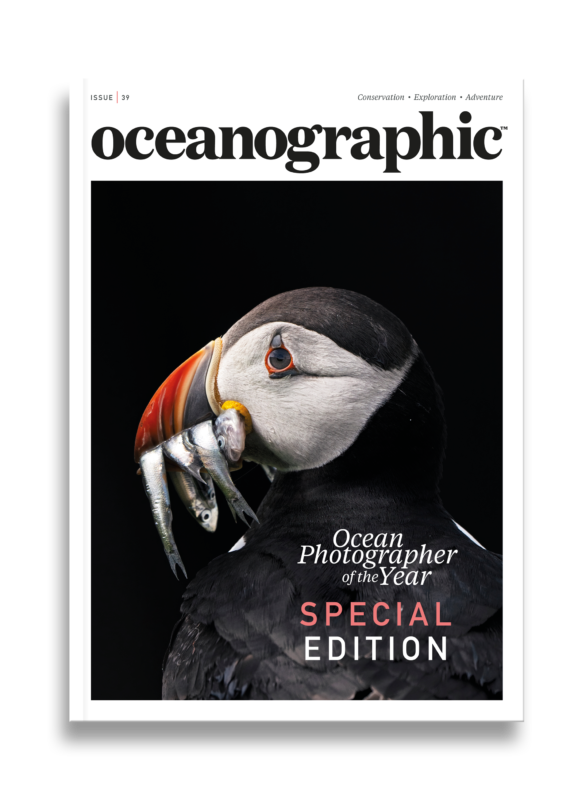The river & the wall
In 2015, the President of the United States first revealed a plan to build a southern border wall. Now the wheels are in motion. What impacts could a wall have on the people and wildlife reliant on the Rio Grande?
I plunge my paddle deep into the cool waters of the Rio Grande River, now a cloudy mixture of brown sandstone and chalky limestone silt. I slide my paddle into the water once more and am now officially on the Mexican side of the river.
The river carries me into a rapid strewn with the upturned canoes and supplies of two of my friends. I fight the flow of the river to set up for a run over the right edge of a slightly submerged slab of slick, yellow limestone, a pinball bounce off one square rock in the centre of the falls and second on the right, a kick to the left and then out. As I will the 1,000lb canoe into slower water just above the falls, I feel for a moment as if the force of my strokes has fused my body to the canoe. The moment quickly subsides. I plunge into the cold water. I feel the weight of the canoe on my back. I grab at the blue darkness then push against gunwales. My foot is stuck, pinned by a blue tie-down strap and attached to half a ton of submerged expedition gear.
The seven of us, five crew members and two cameramen, are only halfway through our 1,200-mile journey along the entire 260 linear mile length of the Texas-Mexico border and I am certain that this will be my contribution to the film – drowning beneath the wreckage of my vessel in the most isolated place in Texas, a state, most Texans will remind you, that is larger than the entirety of France.
The idea for this adventure began exactly a year ago, as my good friend and filmmaker, Ben Masters, and I were both on different assignments in the Sky Islands of West Texas, ranging from 5,000-8,000ft above sea level with some of the most biologically diverse environments on Earth.
While Ben was shooting a short documentary film on the plight of mountain lions in Texas, I was leading a trip for a group of friends to see desert bighorn sheep recovery efforts at work in the 6,000ft Del Norte mountains of West Texas. I was Associate Director of Texas Parks and Wildlife Foundation, the non-profit partner to the state’s lead natural resources agency.
Researchers from Texas Parks and Wildlife Department and Borderlands Research Institute believe that, like mountain lions and other terrestrial mammals, desert bighorn sheep rely on the mountains that slice into Mexico as a natural migration corridor and on the river that serves as an arbitrary international boundary as their primary water source in the largest desert in North America.
However, the US government was openly discussing efforts to thwart decades of Texas’ conservation efforts. The administration was touting the completion of a 30ft steel and concrete wall on the southern border, the construction of which began in 2006. It would cut through Texas’ largest federal and state-owned lands held in public trust and sever all migration across and access to the Rio Grande River. In a state with only 3% publicly owned land and the remaining 97% protected fiercely by private landowners, it was unconscionable.
As I stood atop Elephant Mountain in January of 2017, staring out across the desert floor to the milk-white and dark brown striated cliffs of the Sierra del Carmens and the forested summits of the Maderas del Carmen, I began to connect the dots between the survival of species and critical international migration corridors across the Rio Grande River. I called Ben as soon as I got back into cell coverage, as I heard that he too was alarmed that the general public was unaware of the damage a physical barrier would have to land, water and wildlife in Texas.
We talked briefly about what we were learning – stable populations of lions, sheep, deer and even black bears in West Texas were reliant on access to the Rio Grande and Mexico’s vast wilderness in the northern state of Coahuila. A wall threatened their survival. If wildlife were reliant on the river and its surrounding habitat, then the entire Texas-Mexico border was in peril. No one, outside of a small group of researchers and wildlife professionals, we figured, knew the consequences of the president’s campaign promise.
“I am thinking of taking a trip along the river by horse, bike and canoe from El Paso to the Gulf of Mexico. I realise now that I know very little of what’s truly there, what’s planned and what’s at stake,” Ben said. A month later, in February 2017, National Geographic filmmaker Filipe DeAndrade landed in El Paso for a reconnaissance mission with Ben and I. Filipe grew up with his family in the favelas of Rio de Janeiro, Brazil and after arriving on a tourist visa, remained undocumented in the US throughout his teenage years.

Continue reading
This story is exclusively for Oceanographic subscribers.
This feature appears in ISSUE 13: This is Hvaldimir of Oceanographic Magazine
Printed editions
Current issue
Back issues

Current Issue
Issue 39 Special Edition: OPY2024

Back Issues
Issue 37 Wild Alaska: River & Ocean
Enjoy so much more from Oceanographic Magazine by becoming a subscriber.
A range of subscription options are available.









